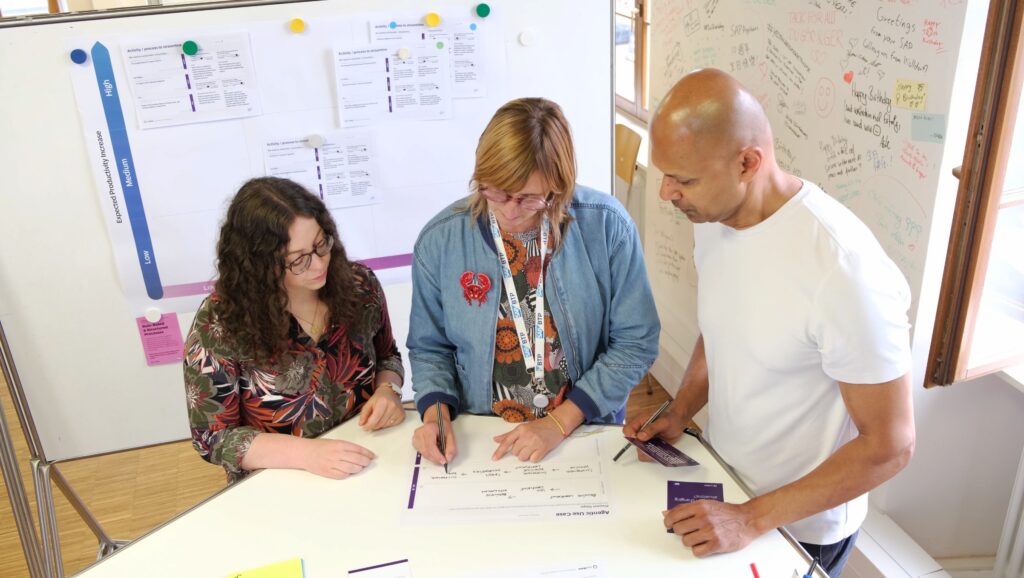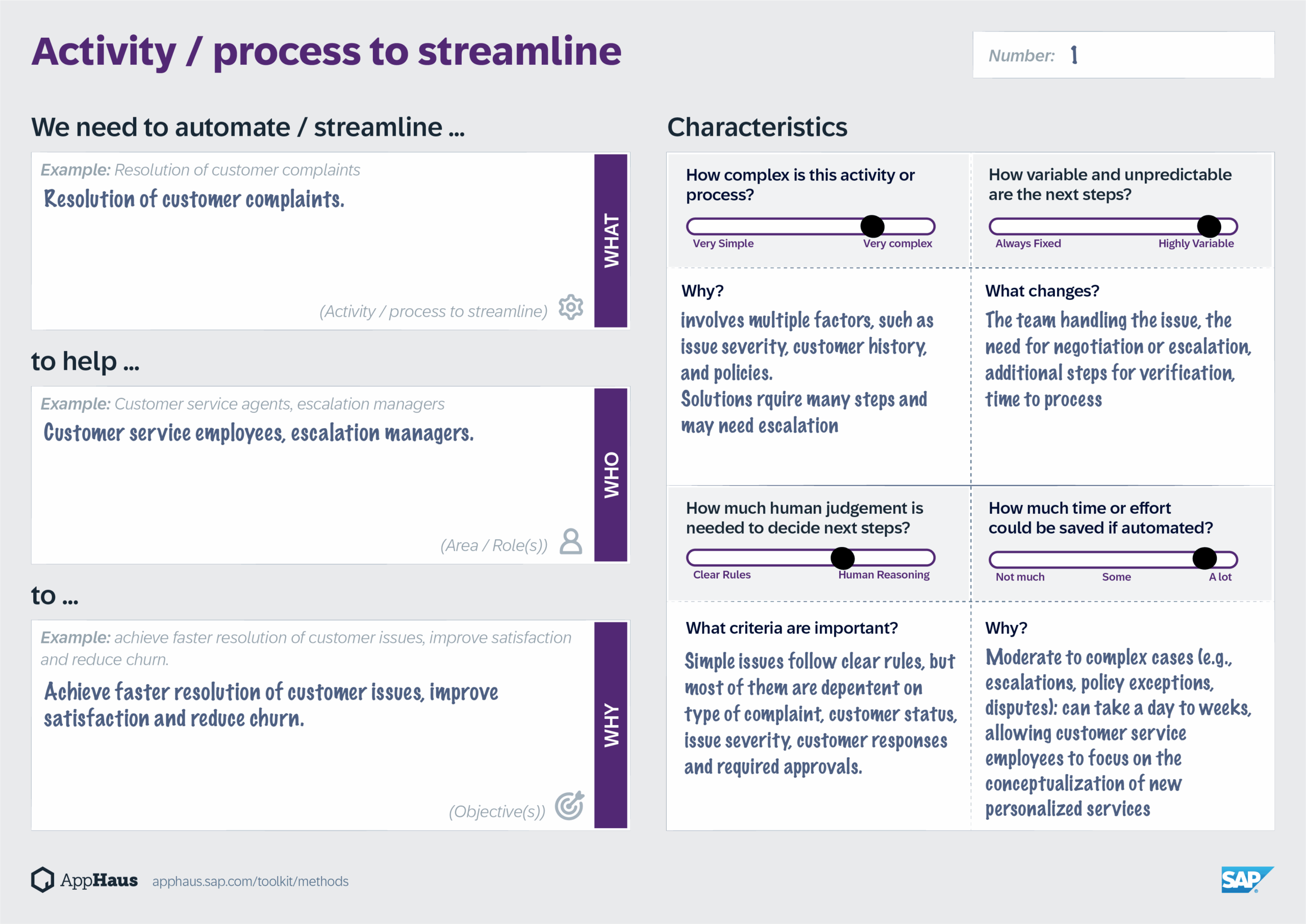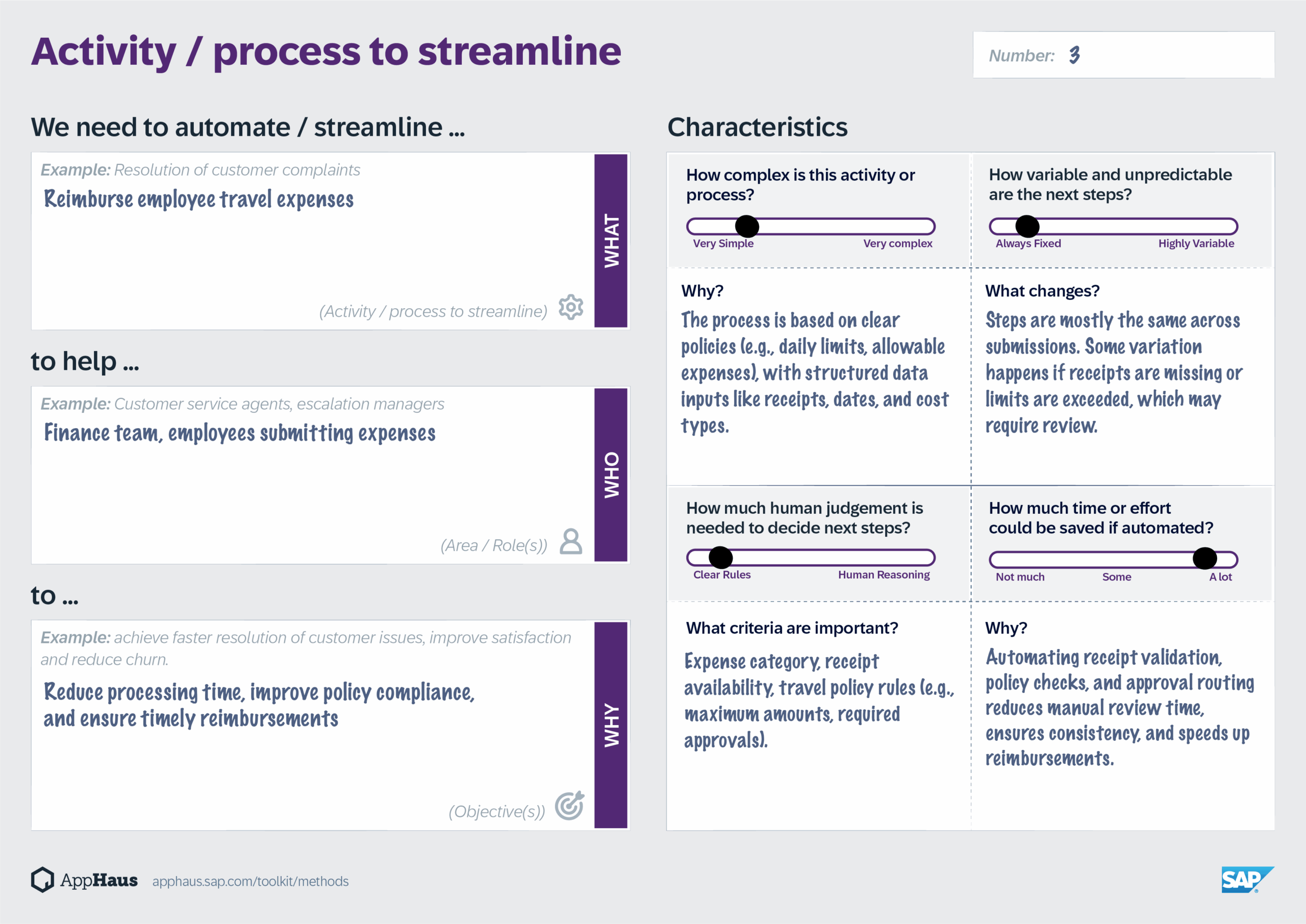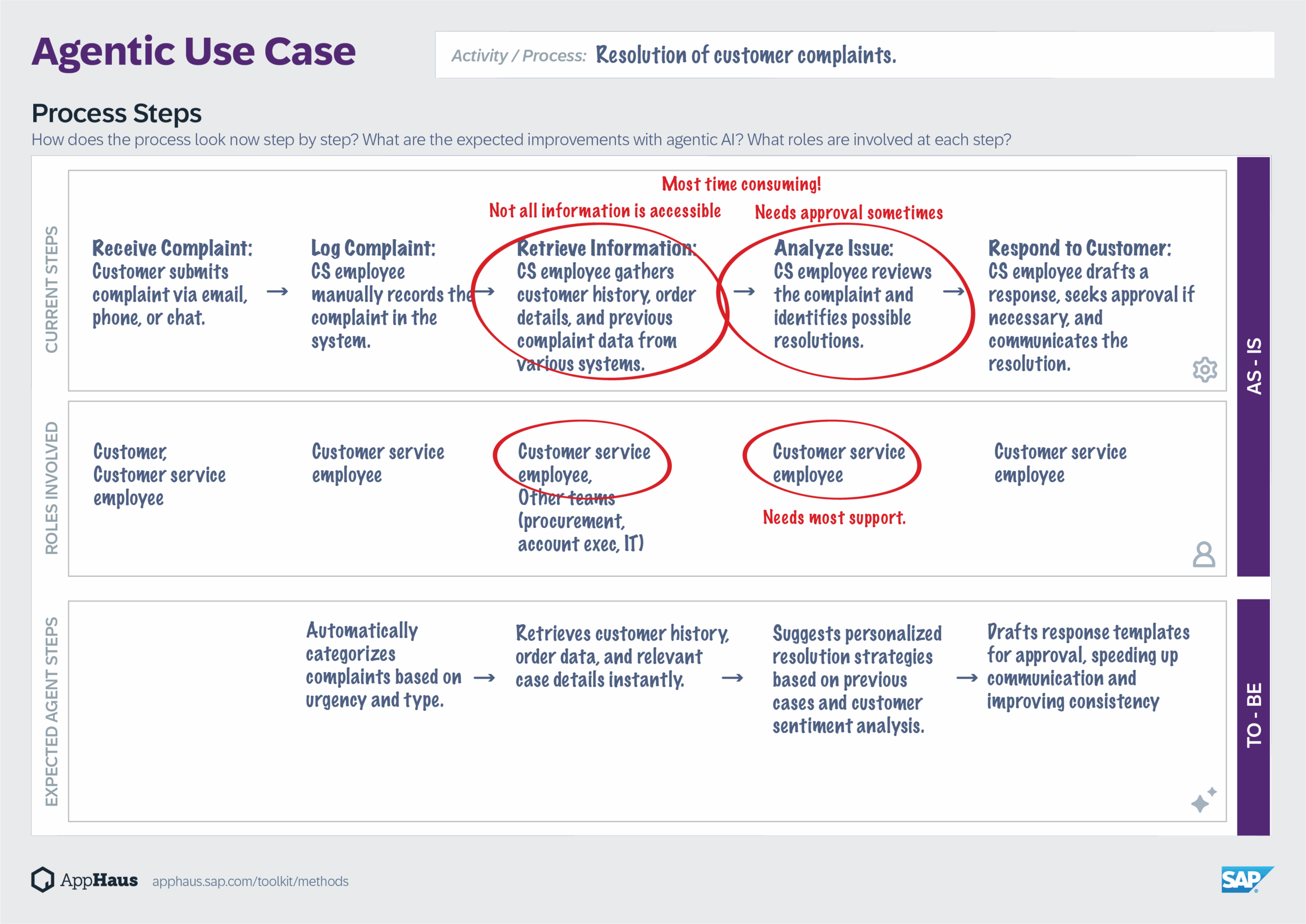Joule Agent Discovery Workshop
Identify high-value agentic use cases
This workshop helps participants understand the unique role of agentic AI — what it’s suited for, and how it differs from other automation and AI technologies. By the end, teams will have identified high-value agentic use cases and documented one in detail, ready to take forward.
GOAL
Understand the power of agents and identify agentic use cases to drive productivity.
PARTICIPANTS
Strategic decision makers from business departments, and IT experts (3 - 10 people)
DURATION
2h – 3h on-site or virtual
PHASE
Discover / Design
Before You Start
- Agree on the focus topics
- Discuss with the customer what topics should the workshop focus on. This could be a business area (like Customer Service), a specific department (such as Finance), or even a process within those areas (like Invoice Processing within Finance).
Materials You Will Need
Templates for Download
- Joule Agent Discovery Workshop Facilitation Guide
- Automation Scenario Template
- Automation Scenario PDF Form
- Agentic Use Case Ideation Cards
- Reason And Act Framework Template
- Agentic Potential Decision Cards
- Prioritization Graph for Agentic Use Casees
- Agentic Use Case Template
- Getting Started with Agentic Technology
- Coach Agenda – Joule Agent Discovery Workshop
Templates for Virtual Collaboration
Learn to run it on your own
Want to lead these workshops yourself? These free learning resources will guide you through every step.

Discovering High-Value Opportunities for Agentic AI

Spotting Agentic Opportunities in Practice
Steps
The following steps are meant to guide you through the exercises of the workshop. For more detailed instructions and recommendations, download the workshop facilitation guide.
Get inspired
Begin with brief introductions, then give a 20–30 minute presentation to introduce agentic technology, so participants understand why it matters — especially compared to traditional automation or AI. Explain:
- what it is
- how it differs from other AI and automation approaches
- which types of use cases are a good fit,
- and share real-world examples relevant to the group
You can use the provided slides as a starting point, but tailor them to your audience — and if possible, show a live demo. End with a short Q&A.
Tips
Here are some resources to build your presentation:
- Boosting AI-driven Business Transformation with Joule Agents
- Building Joule Agents across SAP Business Suite
- What are AI agents?
If you’re not comfortable delivering this part yourself, consider inviting an expert with hands-on experience in building or working with AI agents.
Ideate automation scenarios
From this part onward, participants work in breakout teams of no more than 6 participants each.
Ask participants:
- What activities or processes in your company should be automated or streamlined to improve efficiency?
Each participant identifies 2–3 activities or processes and documents them in the Automation Scenario template.
They begin with the left side, describing the activity and using the Agentic Use Case Ideation Cards to come up with ideas about activities or processes to streamline that can be a good fit for agentic AI.
Next, they complete the right side — the Characteristics section — to assess the activity’s fit for agentic automation. Ask them to use the sliders and briefly explain each rating.
See examples
Tips
- Short on time? Ask participants to complete just one idea instead of two to three.
- Want to save time during the session? Have participants fill out the template in advance. To support this, schedule a short prep session to explain the template and how to use the ideation cards — giving them time to reflect on meaningful automation opportunities. You can send them the template as PDF form to fill out
Prioritize use case ideas
In this step, participants prioritize their ideas based on agentic potential and business impact.
Each participant briefly shares their ideas using the filled-in template, explaining:
- What the activity or process is
- Who performs it
- Why it should be automated
As each idea is shared, place it on the prioritization graph. Check the answers on the “Characteristics” section of the template to position your ideas.
Start with the horizontal axis – agentic potential.
Look at the first three questions related to complexity, variability, and the need for human judgment. Activities with high complexity, high variability and dependent on human-like reasoning to determine next steps have a higher agentic potential and should be positioned at the high end. To understand better what low, medium, and high agentic potential means, look at the Agentic Potential Decision Cards.
Continue with the vertical axis – expected productivity increase. Look at the last question related to effort. Activities saving lots of effort or producing high value when automated, should be positioned higher.
Encourage the team to briefly discuss and agree on placement.
Once all ideas are placed, choose at least one in the top-right quadrant to describe in the next step.
Detail out selected use cases
In this step, participants use the Agentic Use Case template to map the current process of the selected activity to automate and write down their expectations how it could be supported by agentic AI.
They start by writing the name of the activity on the template, then list the main steps of the current process, indicating which roles are involved at each stage. Ask them to highlight the most manual or repetitive steps — especially those that slow things down or create extra effort — and identify the role that carries the bulk of that work.
Next, participants imagine how an AI agent could support the process. They should focus on the challenging steps they just identified and describe how the agent might help — for example, by retrieving data, making suggestions, or drafting responses. Not all steps need to be automated; the goal is to improve the parts that are most time-consuming or complex.
Finally, have participants agree on the role or roles that would benefit most from agentic support. These are the people who should be involved in the next session — the AI Agent Design Workshop — to help shape how the agent will function in detail.
See example
Tips
- Write down the first and last step first and then fill in the in-between steps.
- If the team wants to develop more ideas, allow extra time or divide the groups in pairs so that more use cases can be detailed out simultaneously.
You’re Done!
Congratulations on completing the Joule Agent Discovery Workshop! By now, you’ve identified promising opportunities to streamline activities and processes with agentic AI — and selected at least one high-impact use case to take forward. You’re now ready to move into the next phase: defining your envisioned agent in detail during the AI Agent Design Workshop. Stay tuned — we’ll share updates as soon as this next step is available!
Your voice matters!
Have you tried out this method? We’d love to learn about your experiences, feedback, and ideas.


